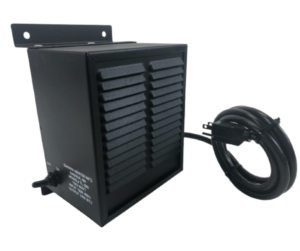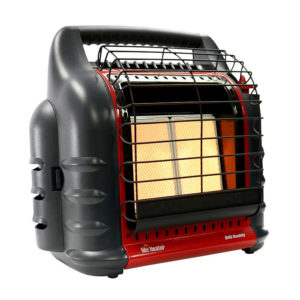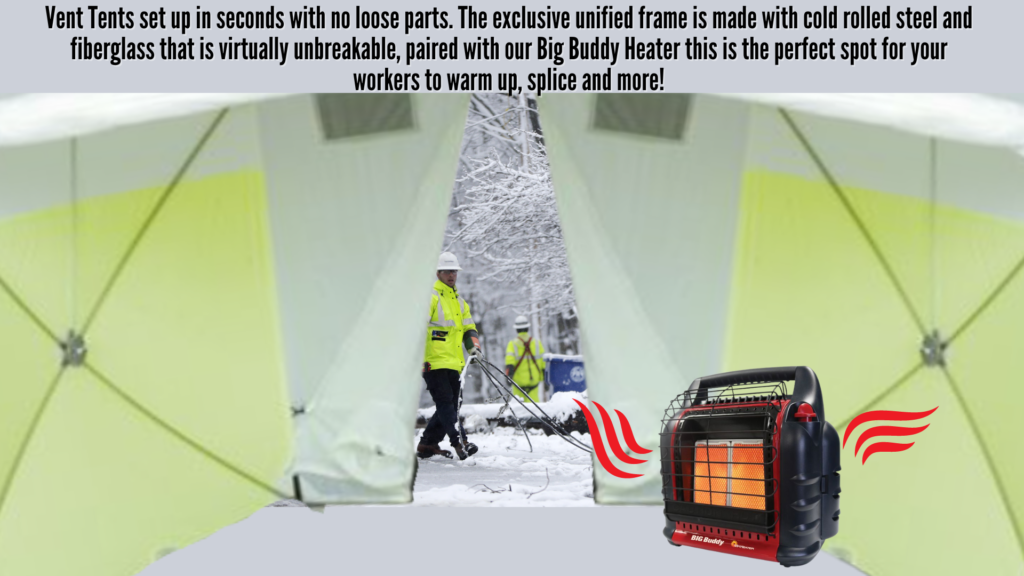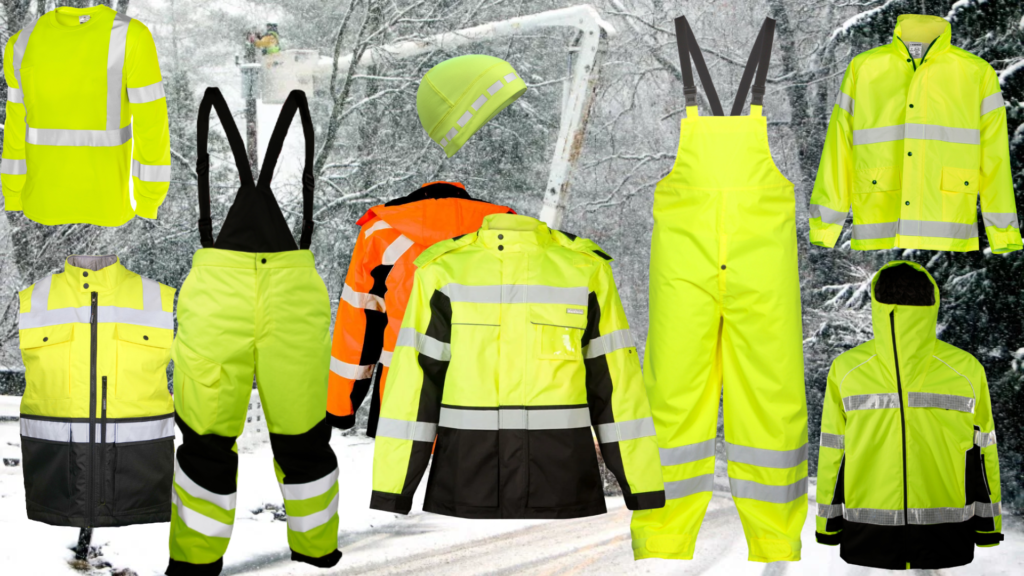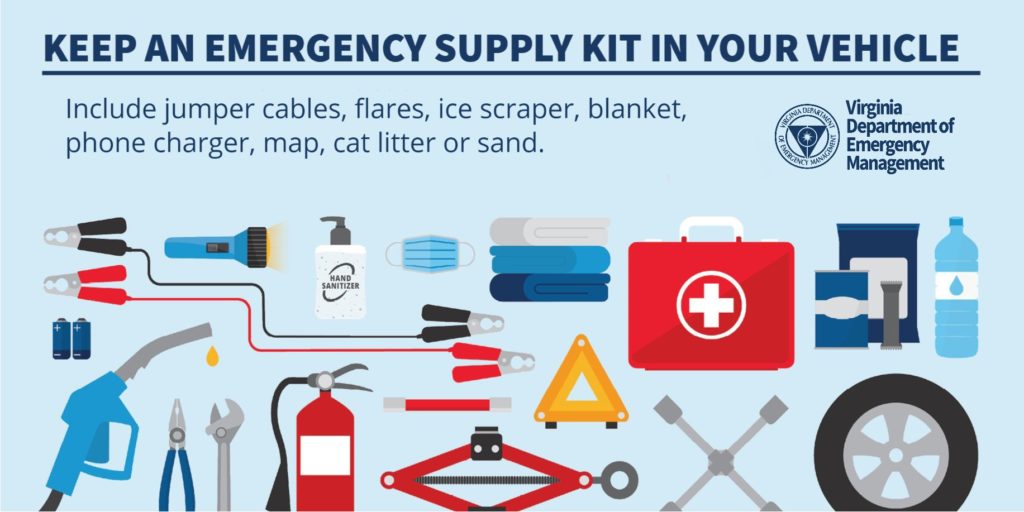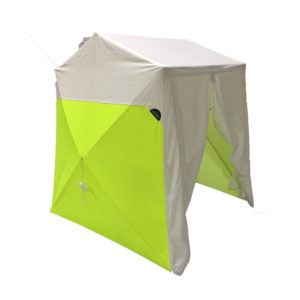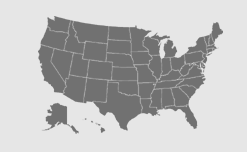|
|||||||||||||||||||||||||||||||
|
|
|||||||||||||||||||||||||||||||
|
Bucket Heater
FEATURES:
The Bucket Heater was designed with special features needed for use in elevated buckets. A front louver face panel protects the heating element from being damaged by wire cuttings, tools, etc., while protecting the user from coming into contact with heating surface. The cord and heavy duty metal cabinet remain cool during long periods of operation. The Bucket Heater promotes safety first with waterproof cord grommets and rubber covered switch handles, no dangerous flames, no combustible fuel or burning coils. The heaters have an optional electric shut off if tipped in any direction, making these the safest heating units available for any work area. Three prong electric plug and heavy duty cord meet OSHA standards for this type of heater. VPN: 38020 Big Buddy Heater
FEATURES:
This patented radiant 4,000-18,000 BTU Liquid Propane heater is the perfect solution for heating up to 450 sq. ft. An integrated fan increases the heating capacity of this unit, blending radiant and convection style heat to give you the best of both worlds. Two internal swivel regulators give you the ability to adapt usage from disposable cylinders to a remote gas supply with the purchase of a single hose and filter. (see below) To light the unit, simply push and rotate the knob. The built in Piezo sparking mechanism will take care of the rest. With the Oxygen Depletion Sensor (ODS) and accidental tip-over safety shut-off, you can be sure that you will enjoy years of comfortable outdoor safe heat. 7 Winter Weather Worker Safety Tips
Keep an Eye on the Weather Nothing ruins productivity like having a jobsite full of workers who can’t work because a blizzard came through and you were caught unaware. Be prepared by keeping an eye on the forecast and knowing when winter weather is going to strike. The best method is to check the national weather forecast every morning and several times as the day progresses. The National Oceanic and Atmospheric Administration (NOAA) is a great source to get timely weather reports on unpredictable changes in weather conditions. This will ensure workers are given enough time and adequate warning to secure work areas, vacate the worksite, and drive home in relatively safe road conditions.
Check jobsites The jobsite site – including any scaffolding and ladders, should be checked before work begins. This will ensure that there are no snowdrifts, ice, fallen trees, or other objects and debris scattered which can delay work or inadvertently create hazards for workers. Be sure to stress the importance of fall precaution and protection to workers when icy conditions exist. Spread salt or sand melt over any icy areas to help with traction for workers and vehicles. If an area can’t be cleared, be sure to mark that area and advise workers to use caution, especially when carrying materials and tools! Remove any icicles that may have formed to prevent falling object hazards.
Provide a Warm Area for Breaks Workers expend more energy when working in cold weather to keep their bodies warm. Make sure you have a heated area – like a tent, trailer or indoor area for workers to warm up from the cold – Our Vent Tents and Heaters make an excellent solution to this problem! Encourage workers to take frequent breaks to warm up, drink something warm and change out of wet clothing! Keep an eye on your workers for signs of fatigue, frostbite or hypothermia.
Wear Proper PPE When winter weather conditions are present, be sure workers are wearing necessary personal protective equipment (PPE). In addition to the normal required PPE, the following items should be considered when working in the cold on a job site: Using liners in hard hats will help keep workers warm and prevent heat from escaping. When selecting hand wear, Gloves and mittens should be selected to provide enough dexterity to work with tools and materials. Remind workers to always keep their gloves on, especially when climbing ladders, scaffolding, or getting onto trucks or other equipment. Frostbite can occur immediately if workers touch extremely cold metal with bare hands. Encourage workers to wear waterproof boots, and to bring EXTRA socks to protect against the cold (and wet!). Goggles, safety glasses, and facemasks can be treated with anti-fog spray to prevent their vision from being obstructed. Our full line of PPE can help keep your workers warm and safe this winter!
Wear Layers! Workers should wear warm clothing to protect against the cold and maintain proper levels of body heat. Wearing appropriate outer clothing to ensure their clothes do not get wet from the snow, would shield workers from being exposed to frostbite, cold stress, and hypothermia. Keeping warm is one of the most important things when working in cold weather. The key is finding a balance of wearing enough layers to stay warm while still being able to maintain a good range of mobility to perform your work. Layer clothing with some moisture-wicking thermals on your inner layer and have a waterproof outer layer to prevent moisture from soaking into your clothing. If clothing gets wet, it’s important to change into dry clothes to avoid losing body heat. Limit the amount of skin exposed to cold temperatures with careful attention to the extremities by wearing knit hats and earmuffs for the head, wool socks for the feet, balaclavas for the face, and gloves and mittens for the hands.
In its Cold Stress Safety and Health Guide, OSHA offers the following guidance: Dressing properly is extremely important to preventing cold stress. The type of fabric worn also makes a difference. Cotton loses its insulation value when it becomes wet. Wool, silk and most synthetics, on the other hand, retain their insulation even when wet. The following are recommendations for working in cold environments:
Put Emergency Kits in Work Vehicles Make sure each of your company’s work trucks / vehicles are equipped with winter weather emergency kits. Your kits should include an ice scraper, shovel, blankets or space blankets, water, emergency flares, matches non-perishable snacks, tow straps, and a backup battery for your cell phone. It’s also a good idea to have some sand, cat litter, or salt to help with traction in case you get stuck. Encourage your workers to create emergency kits for their personal vehicles. Employers should also have in place emergency and first aid kits at strategic locations on the worksite so that in case of accidents workers can easily use them to help their co-workers until emergency services arrive to provide professional medical treatment as required. Here is a basic kit, courtesy of the VA Dept of Emergency Management Be cautious when driving in snow and ice. Give yourself plenty of time to get to your destination and leave plenty of space between yourself and other vehicles to avoid accidents. Emergency kits should also contain flashlights as power outages are possible in severe winter weather.
Educate your Crew Educate workers on the signs of frostbite and hypothermia. Even when employers do everything they can to protect workers, issues can still arise. Supervisors and workers need to know the symptoms of hypothermia and frostbite so that if anyone shows these signs, they can receive immediate medical attention. When workers know what to look for, it’s more likely they will seek medical treatment sooner. VENT TENT
FEATURES:
U-TECK has developed the Vent-Tent, a portable shelter with more safety features than any other The Vent-Tent is specially designed to safeguard the craft person from fatal carbon monoxide build-up. U-TECK has also installed a “sock” in the back of the Vent-Tent to allow for a ventilator hose, blower, or In addition to carbon monoxide protection, the VentTent, with its roll-up bottom and side windows, is excellent on a hot, rainy day! Call for a quote today! (800) 542-7011 |
||||||||||||||||||||||||||||||









